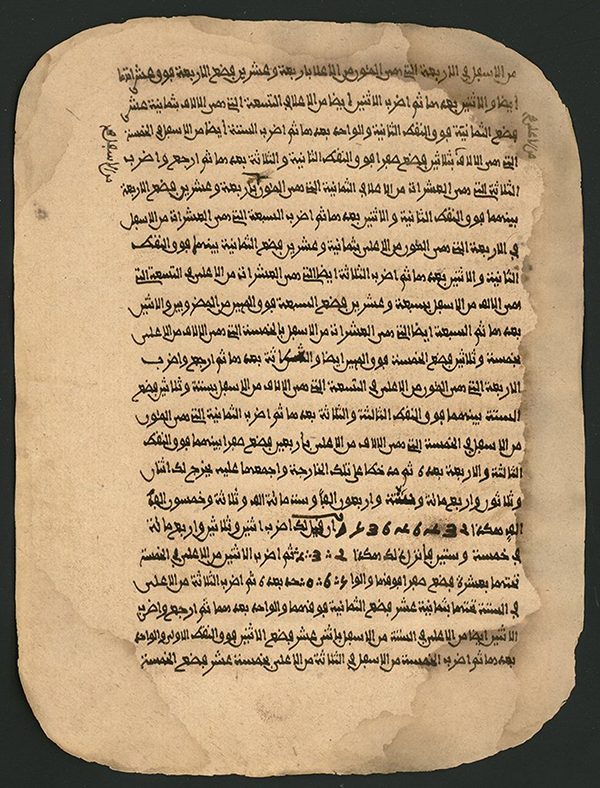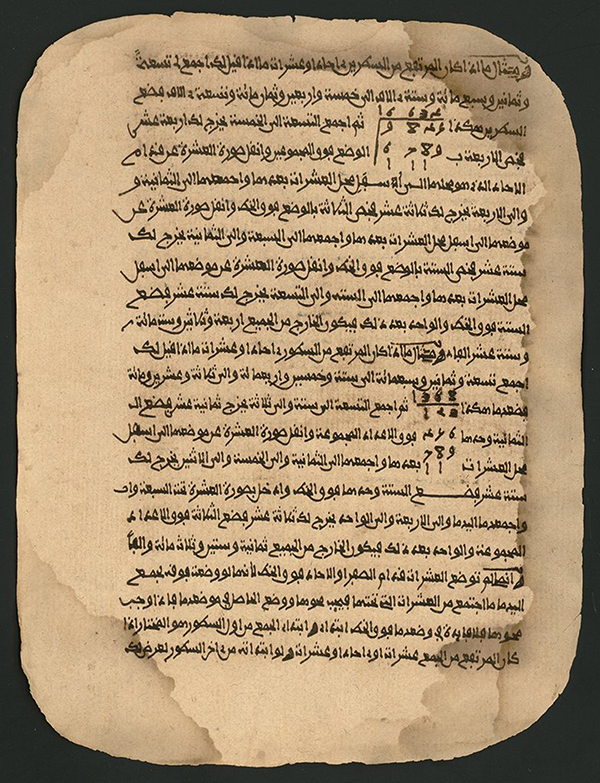- About MAA
- Membership
- MAA Publications
- Periodicals
- Blogs
- MAA Book Series
- MAA Press (an imprint of the AMS)
- MAA Notes
- MAA Reviews
- Mathematical Communication
- Information for Libraries
- Author Resources
- Advertise with MAA
- Meetings
- Competitions
- Programs
- Communities
- MAA Sections
- SIGMAA
- MAA Connect
- Students
- MAA Awards
- Awards Booklets
- Writing Awards
- Teaching Awards
- Service Awards
- Research Awards
- Lecture Awards
- Putnam Competition Individual and Team Winners
- D. E. Shaw Group AMC 8 Awards & Certificates
- Maryam Mirzakhani AMC 10 A Awards & Certificates
- Two Sigma AMC 10 B Awards & Certificates
- Jane Street AMC 12 A Awards & Certificates
- Akamai AMC 12 B Awards & Certificates
- High School Teachers
- News
You are here
Mathematical Treasure: Arithmetic from Timbuktu
For over a thousand years beginning in the eleventh century, Timbuktu, a city-state now in the West African country of Mali, was a vital trade center for the northern Sahara region. It was also a site of Islamic scholarship with many libraries. Many of the manuscripts once found in this city have been destroyed by the ravages of time; thus, it is rare to find a mathematical manuscript from the city’s early period. Explanation of Problems in Arithmetic with Examples, a commentary by the 17th-century scholar Ahmad ibn Sulayman al-Rasmuki (d. 1639) on the work of the medieval mathematician al-Samlali, provides its readers with a background in arithmetic and problem-solving, as well as supplying a brief history of the development of mathematics. The page shown below depicts the numerals to be used:

Addition of multi-digit numbers is performed from the bottom of the list upwards with the sum written at the top of the configuration:

The manuscript contains various charts and diagrams, like the one on the page below:

The images above are provided through the courtesy of the United States Library of Congress. See the Library’s Ancient Manuscripts from the Desert Libraries of Timbuktu for images of manuscripts on many subjects, including two additional images of the one featured here, Kashf al-Hijab li-Asfiya' al-Ahbab an Ajnihat al-Righab fi Marifat al-Hisab.
Frank J. Swetz (The Pennsylvania State University), "Mathematical Treasure: Arithmetic from Timbuktu," Convergence (June 2017)




